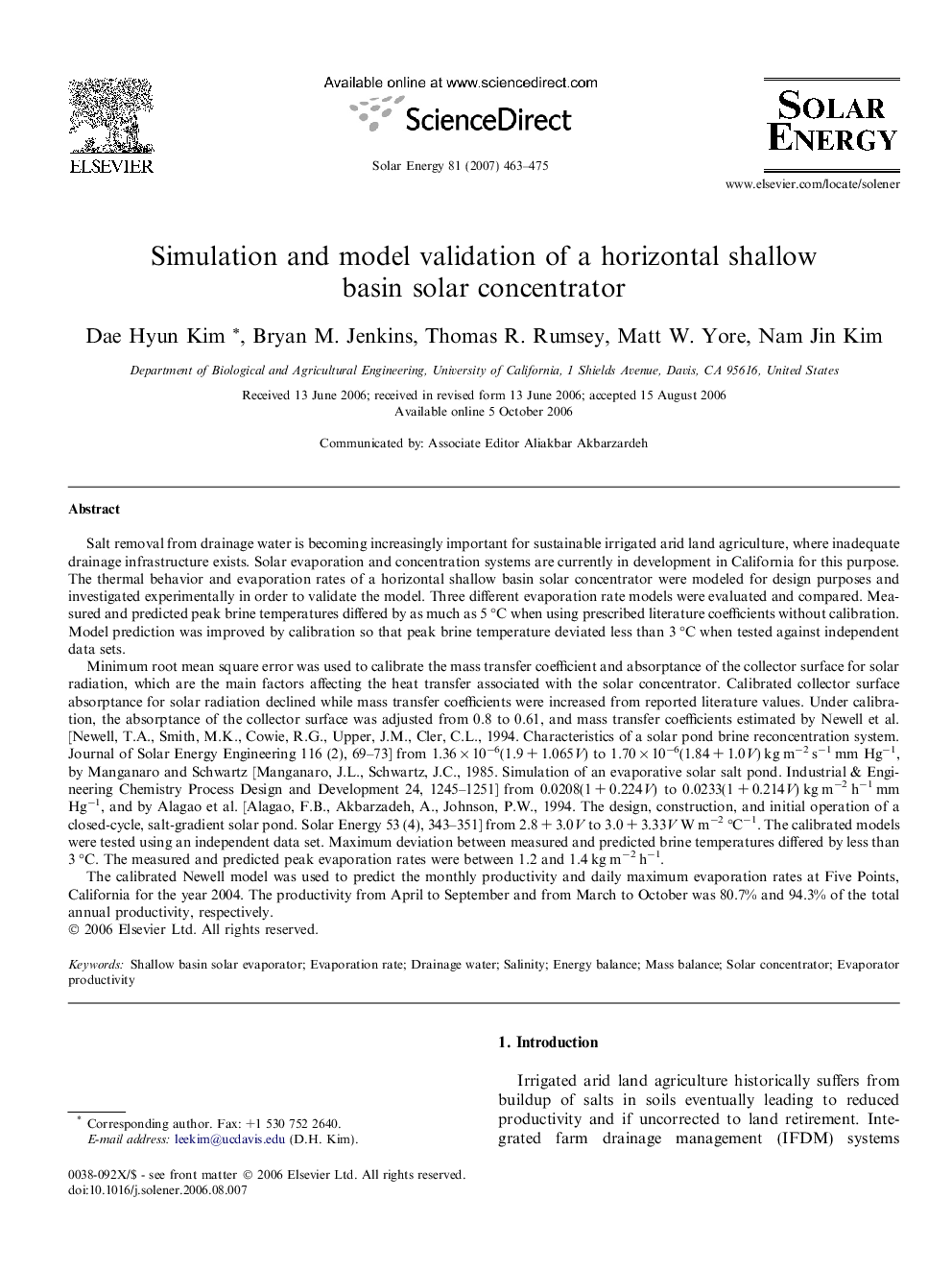| کد مقاله | کد نشریه | سال انتشار | مقاله انگلیسی | نسخه تمام متن |
|---|---|---|---|---|
| 1551753 | 998147 | 2007 | 13 صفحه PDF | دانلود رایگان |

Salt removal from drainage water is becoming increasingly important for sustainable irrigated arid land agriculture, where inadequate drainage infrastructure exists. Solar evaporation and concentration systems are currently in development in California for this purpose. The thermal behavior and evaporation rates of a horizontal shallow basin solar concentrator were modeled for design purposes and investigated experimentally in order to validate the model. Three different evaporation rate models were evaluated and compared. Measured and predicted peak brine temperatures differed by as much as 5 °C when using prescribed literature coefficients without calibration. Model prediction was improved by calibration so that peak brine temperature deviated less than 3 °C when tested against independent data sets.Minimum root mean square error was used to calibrate the mass transfer coefficient and absorptance of the collector surface for solar radiation, which are the main factors affecting the heat transfer associated with the solar concentrator. Calibrated collector surface absorptance for solar radiation declined while mass transfer coefficients were increased from reported literature values. Under calibration, the absorptance of the collector surface was adjusted from 0.8 to 0.61, and mass transfer coefficients estimated by Newell et al. [Newell, T.A., Smith, M.K., Cowie, R.G., Upper, J.M., Cler, C.L., 1994. Characteristics of a solar pond brine reconcentration system. Journal of Solar Energy Engineering 116 (2), 69–73] from 1.36 × 10−6(1.9 + 1.065V) to 1.70 × 10−6(1.84 + 1.0V) kg m−2 s−1 mm Hg−1, by Manganaro and Schwartz [Manganaro, J.L., Schwartz, J.C., 1985. Simulation of an evaporative solar salt pond. Industrial & Engineering Chemistry Process Design and Development 24, 1245–1251] from 0.0208(1 + 0.224V) to 0.0233(1 + 0.214V) kg m−2 h−1 mm Hg−1, and by Alagao et al. [Alagao, F.B., Akbarzadeh, A., Johnson, P.W., 1994. The design, construction, and initial operation of a closed-cycle, salt-gradient solar pond. Solar Energy 53 (4), 343–351] from 2.8 + 3.0V to 3.0 + 3.33V W m−2 °C−1. The calibrated models were tested using an independent data set. Maximum deviation between measured and predicted brine temperatures differed by less than 3 °C. The measured and predicted peak evaporation rates were between 1.2 and 1.4 kg m−2 h−1.The calibrated Newell model was used to predict the monthly productivity and daily maximum evaporation rates at Five Points, California for the year 2004. The productivity from April to September and from March to October was 80.7% and 94.3% of the total annual productivity, respectively.
Journal: Solar Energy - Volume 81, Issue 4, April 2007, Pages 463–475